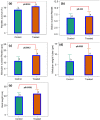Optimization of industrial (3000 L) production of Bacillus subtilis CW-S and its novel application for minituber and industrial-grade potato cultivation
- PMID: 35778426
- PMCID: PMC9249890
- DOI: 10.1038/s41598-022-15366-5
Optimization of industrial (3000 L) production of Bacillus subtilis CW-S and its novel application for minituber and industrial-grade potato cultivation
Abstract
A commercial plant probiotic product was developed employing Bacillus subtilis CW-S in submerged fermentation. The effects of molasses and urea on cell growth were investigated with the goal of low-cost manufacturing. Plackett-Burman and Central-Composite Design (CCD) were utilized to optimize production parameters to maximize productivity. The stability of the formulated product and its efficacy in cultivating minituber in aeroponics and industrial-grade potatoes in the field were assessed. The results showed that the medium BS10 (molasses and urea) produced satisfactory cell density (7.19 × 108 CFU/mL) as compared to the control (1.51 × 107 CFU/mL) and BS1-BS9 (expensive) media (1.84 × 107-1.37 × 109 CFU/mL). According to validated CCD results, optimized parameters fitted well in pilot (300 L; 2.05 × 109 CFU/mL) and industrial (3000 L; 2.01 × 109 CFU/mL) bioreactors, resulting in a two-fold increase in cell concentration over laboratory (9.84 × 108 CFU/mL) bioreactors. In aeroponics, CW-S produced excellent results, with a significant increase in the quantity and weight of minitubers and the survival rate of transplanted plantlets. In a field test, the yield of industrial-grade (> 55 mm) potatoes was increased with a reduction in fertilizer dose. Overall, the findings suggest that CW-S can be produced commercially utilizing the newly developed media and optimized conditions, making plant probiotics more cost-effective and accessible to farmers for crop cultivation, particularly in aeroponic minituber and industrial-grade potato production.
© 2022. The Author(s).
Conflict of interest statement
The authors declare no competing interests.
Figures








References
-
- Bharti N, et al. Microbial plant probiotics: problems in application and formulation. In: Kumar V, Kumar M, Sharma S, Prasad R, et al., editors. ) Probiotics and Plant Health. Springer; 2017. pp. 317–335.
-
- Chew KW, et al. Transformation of biomass waste into sustainable organic fertilizers. Sustainability. 2019;11:2266. doi: 10.3390/su11082266. - DOI
-
- Tran TNT, et al. Characterization of bacteria type strain Bacillus spp. isolated from extracellular polymeric substance harvested in seafood wastewater. J. Chem. Technol. Biotechnol. 2021 doi: 10.1002/jctb.6870. - DOI
-
- Song, D., Ibrahim, S. & Hayek, S. Recent Application of Probiotics in Food and Agricultural Science (ed. Rigobelo, E. C.) 1–34 (InTech, 2012).
Publication types
MeSH terms
Substances
LinkOut - more resources
Full Text Sources
Other Literature Sources

